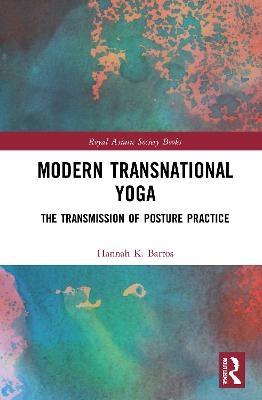
Modern Transnational Yoga
The Transmission of Posture Practice
Seiten
2022
Routledge (Verlag)
978-0-367-53020-4 (ISBN)
Routledge (Verlag)
978-0-367-53020-4 (ISBN)
This is the first book to address the social organisation of modern yoga practice as a primary focus of investigation and to undertake a comparative analysis to explore why certain styles of yoga have successfully transcended geographical boundaries and endured over time, whilst others have dwindled and failed.
Using fresh empirical data of the different ways in which posture practice was disseminated transnationally by Krishnamacharya, Sivananda and their leading disciples, the book provides an original perspective. The author draws upon extensive archival research and numerous fieldwork interviews in India and the UK to consider how the field of yoga we experience today was shaped by historic decisions about how it was transmitted. The book examines the specific ways in which a small group of yogis organised their practices and practitioners to popularise their styles of yoga to mainstream audiences outside of India. It suggests that one of the most overlooked contributions has been that of Sivananda Saraswati (1887-1963) for whom this study finds his early example acted as a cornerstone for the growth of posture practice.
Outlining how yoga practice is organised today on the world stage, how leading brands fit into the wider field of modern yoga practice and how historical developments led to a mainstream globalised practice, this book will be of interest to researchers in the field of Yoga Studies, Religious Studies, Hindu Studies, South Asian History, Sociology and Organisational Studies.
Using fresh empirical data of the different ways in which posture practice was disseminated transnationally by Krishnamacharya, Sivananda and their leading disciples, the book provides an original perspective. The author draws upon extensive archival research and numerous fieldwork interviews in India and the UK to consider how the field of yoga we experience today was shaped by historic decisions about how it was transmitted. The book examines the specific ways in which a small group of yogis organised their practices and practitioners to popularise their styles of yoga to mainstream audiences outside of India. It suggests that one of the most overlooked contributions has been that of Sivananda Saraswati (1887-1963) for whom this study finds his early example acted as a cornerstone for the growth of posture practice.
Outlining how yoga practice is organised today on the world stage, how leading brands fit into the wider field of modern yoga practice and how historical developments led to a mainstream globalised practice, this book will be of interest to researchers in the field of Yoga Studies, Religious Studies, Hindu Studies, South Asian History, Sociology and Organisational Studies.
Hannah K. Bartos is a member of the Centre of Yoga Studies at the School of Oriental and African Studies, University of London, UK. She is also a qualified yoga teacher, having practised for 25 years.
1. Introduction 2. Sivananda and The Divine Life Society 3. Divine Emissaries: Sivananda’s Famous Disciples 4. Satyananda and the Bihar School of Yoga 5. Krishnamacharya and Viniyoga 6. The Yoga of BKS Iyengar 7. Pattabhi Jois and Ashtanga Yoga 8. Conclusion
| Erscheinungsdatum | 07.09.2022 |
|---|---|
| Reihe/Serie | Royal Asiatic Society Books |
| Zusatzinfo | 1 Tables, black and white; 5 Line drawings, black and white; 14 Halftones, black and white; 19 Illustrations, black and white |
| Verlagsort | London |
| Sprache | englisch |
| Maße | 156 x 234 mm |
| Gewicht | 520 g |
| Themenwelt | Geisteswissenschaften ► Religion / Theologie ► Hinduismus |
| Sozialwissenschaften | |
| ISBN-10 | 0-367-53020-1 / 0367530201 |
| ISBN-13 | 978-0-367-53020-4 / 9780367530204 |
| Zustand | Neuware |
| Haben Sie eine Frage zum Produkt? |
Mehr entdecken
aus dem Bereich
aus dem Bereich
Worshipping the Eternal Mother at a North American Hindu Temple
Buch | Hardcover (2024)
Oxford University Press Inc (Verlag)
CHF 136,00


